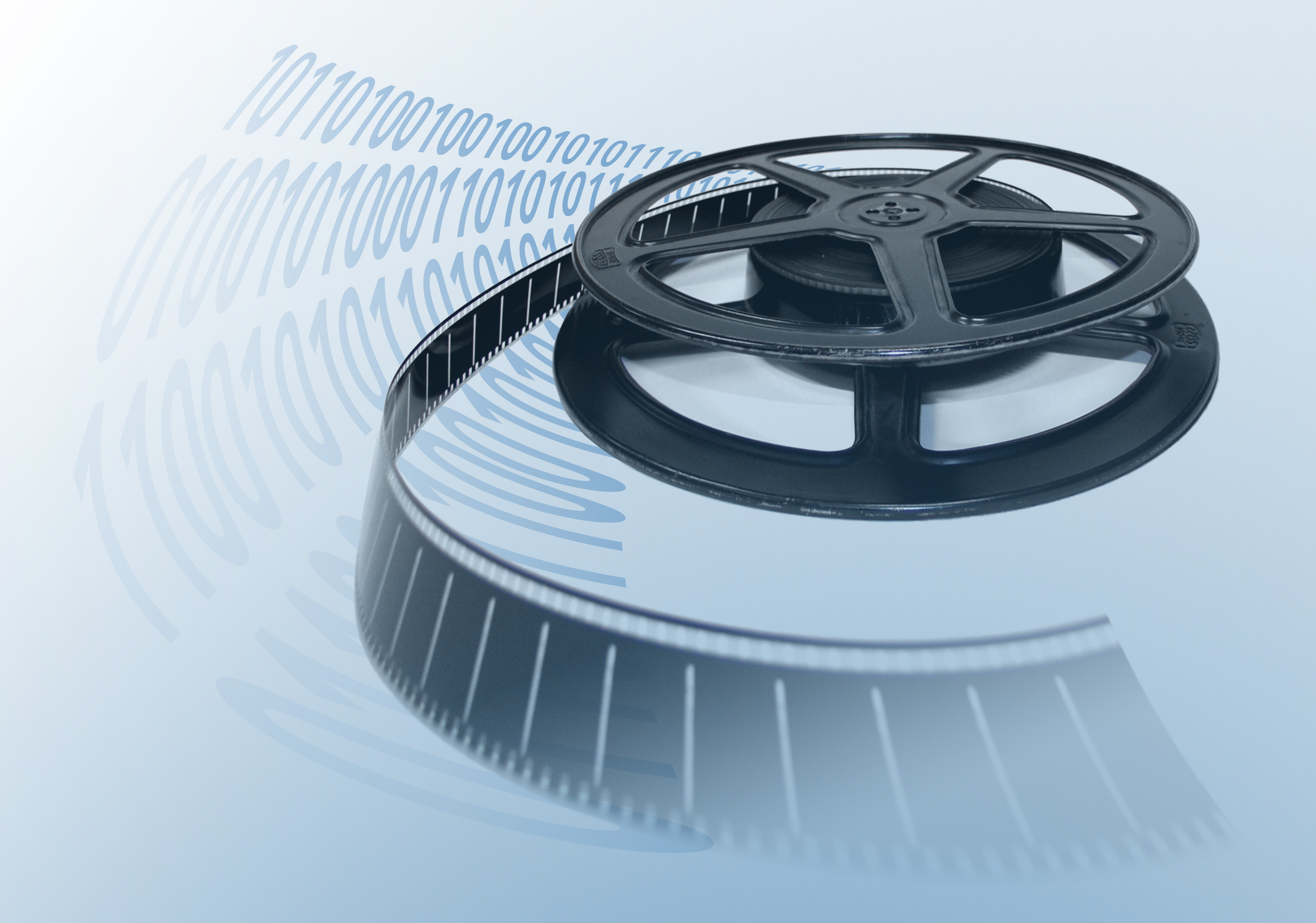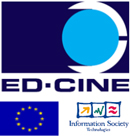Within the EU-Project EDCINE (Enhanced Digital Cinema) the Fraunhofer Institute for Integrated Circuits IIS is working with European partners to develop and test a concept for digital film archiving that addresses both long-term archiving of digital data and the access to already archived digital material. (completed in 2010)
EDCINE – EU project for digital film archiving
Motivation and initial situation
Most of the movies from archives are stored in their original format, usually as 35mm- or 16mm-film reel. So called access copies only exist for a small part of the archived movies, which can be requested by the users of an archive. They are available on film or in another video format. The creation and handling of these access copies, however, is quite costly and in many cases it is not possible to reproduce the full quality of the original.
In order to improve the usage of these films from archives, their digitalization is desirable. Additionally there is going to be more and more digital material in the future, so for archiving the transition to a digital archive is necessary. Due to the immaterial nature of digital data many access copies of highest quality can be created and can be disseminated easily.
Digital system architecture
During the digitalization of film footage and the digital production of cinematic movies enormous amounts of data are generated, which can easily reach several terabyte. In order to master this amount of data and realize a high-quality digital preservation, a two-step model is intended in the architecture. Digital available material is being created in two different quality levels and stored.
The highest quality level is the so called “Master Archive Package”. In this format the digitally available pictures can be saved in a resolution, which displays the best representation for the analog output format. The amount of data is reduced with a lossless compression method, although it is usually still too high to work directly with the data. Nevertheless, this format can be used to perform a digital restoration for example.
In order to enable an easier access, the so called „Intermediate Archive Package“ is generated via an automatic conversion process from the „Master Archive Package“. There the footage is transferred to a possibly lower, but firmer resolution level. To bring the data into a manageable order of magnitude, the material is compressed with losses.
From the „Intermediate Access Package“ metadata can be extracted automatically and transferred into a database for online-access. Users get the opportunity to search material, based on the metadata. For a preview the media data in the package can directly be accessed. If the user has found the desired movie he can order the whole movie or just cutouts in the best suited format for his use. An automatic conversion process is then going to generate a „Dissemination Package“ with the desired material from the „Intermediate Access Package“ and make the files available for download or streaming. Different user groups from cinema to TV channels, for example in need of cutouts for reports, as well as private users can be served from the same database.
Standardized formats archives
For long-time preservation only the use of established and open standards, that are well documented, can be considered. This way it can be ensured that future generations will be capable of reading and interpreting the digital archived material. Another requirement for the concept of digital film archives is that the conversion between the formats and especially from the intermediate access package to the access format should be as simple and fast as possible.
Therefore the JPEG200-fotmat is intended for image coding. On one hand it is very well suited to win lower resolutions due to its possibilities for scalable coding in terms of resolution and display quality. On the other hand it has been chosen by SMPTE as the encoding format for digital cinema. As a result, with small parameter adjustments, a Digital Cinema Package (DCP) for the cinema presentation can be generated with little effort from the Intermediate Access Package.
MXF is used for packaging and synchronizing the media data and for storing the metadata with picture and sound. This is also an established standard offering the flexibility that is necessary for the chosen field of use. Different metadata structures can be implemented for different archives without having to make changes to the overall system.

